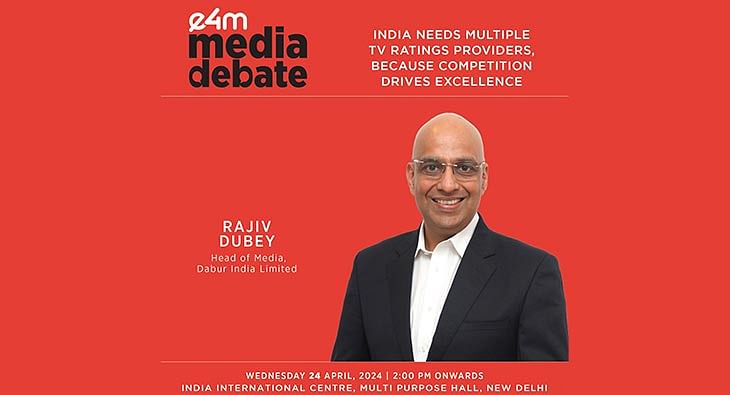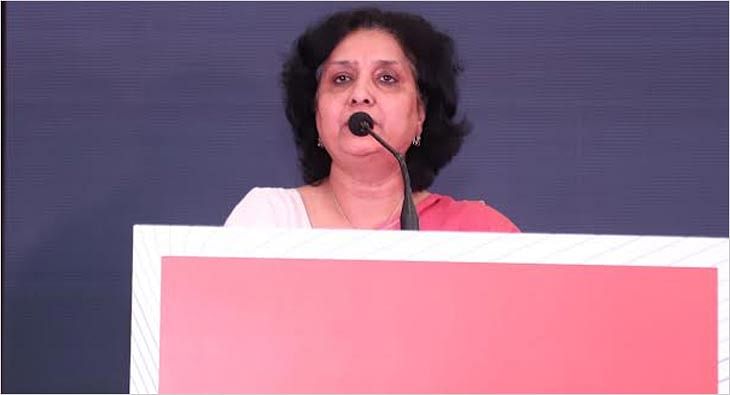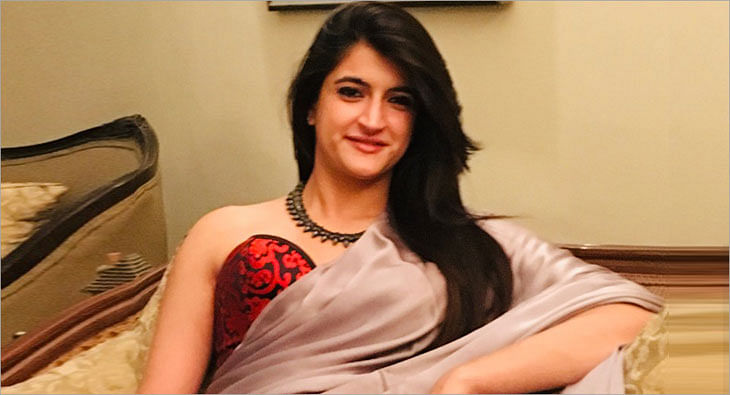Flashback 2014: A roller-coaster ride for the TV industry
Digitisation, 10+2 ad cap, distribution aggregators, Star RIO and BARC; we take a look at the most significant developments of 2014 and the contentious issues that plague the TV industry

In the year 2014 there were significant developments that took place in the television industry in India. Many of them were originated in the previous year but yet were not completely culminated, creating roadblocks in the path forward for the industry. One was digitization and its implementation which broadcasters have found as the biggest impediment to the progress of the industry. If 2013 was year of turbulence for the broadcast industry, 2014 didn’t quite see the storm pass by. We take stock of some of the crucial ones.
Digitization:
This was the biggest roadblock in the industry according to broadcasters. Not only was the implementation of Phase III & IV deferred by a year to end of 2015 and 2016 respectively from the end of the current year, but there were also significant issues faced by broadcasters with the implementation of Phase I & II of digitization. Addressability and on the ground implementation of the first two phases had not seen the changes expected to be brought in through digitization. Tiering of channels into packages for distribution still has not happened post digitization. As a result broadcasters feel that though they have moved to the digital from analogue systems, the ground reality is that things remain still the same. Transparency has still not appeared post digitization.
Current status: Many markets still remain in the analogue system. The government, in November 2014, held the second Task Force meeting with indigenous set top box manufacturers. This is after Narendra Modi’s flagship campaign ‘Make in India’ came to prominence. With the new government coming in the signs were initially positive for the expedition of digitization by the former Ministry of Information and Broadcast (MIB) Prakash Javadekar announcing that digitization will be back on track. However, a few months later a delay in digitization was announced. Currently, Arun Jaitley, the MIB minister, is looking to get the process back on track.
10+2 Ad cap:
The 10+2 Ad cap is another issue still continues to be an issue broadcasters are grappling with. It began in March 2013 when the Telecom Regulatory Authority of India (TRAI) reinstated the Quality of Services norms (QoS) as per CTNR laws, 1995 for broadcasters. This basically restricts broadcasters their advertising time to only 12 minutes per hour of programming. This includes 10 minutes of commercial advertising and 2 minutes of self promotion. The move had been met by stiff protest from News Broadcasters Association (NBA) which had filed a petition against TRAI in the TDSAT. Other channels opposing it include music channels such as 9XM, B4U, etc., regional channels and some networks too have opposed the move.
Current status: Hearings for the 10+2 cap ad cap case have been deferred for almost the entire year, with the final date of the hearing being January 21, 2015 after it was deferred from November 20, 2014. The reason for this was because the High Court didn’t have sufficient time to hear the case. The previous hearing for the case was on May 6, 2014, Saket Singh, the counsel for TRAI, the respondent in this case, pointed out a few broadcasters have been found violating the ad cap rules, with the violations sometimes extending to almost 20 hours a day. The counsel had pleaded for an early hearing in the case. At its December 2013 hearing, the Delhi High Court had given temporary relief of around three months to broadcasters when it asked TRAI not to take any coercive action against the news broadcasters for not following the 12-minute mandated ad cap.
Distribution Aggregators:
TRAI in February 2014 released a paper aimed at breaking up the distribution aggregators which it saw as a cartelization from major Indian broadcasters through distribution firms which they hold a stake in. The paper mandated that distributors cannot bundle channels from various networks and broadcasters while at the same time selling content to various cable operator and DTH platforms companies. It further said that only broadcast companies belonging to the same group can bundle their channels and offer them in bouquets separately.
Current status: This has resulted in the breaking up of all major alliance within the distribution aggregators. MediaPro that was a joint venture between Zee Turner and Star Den dissolved in April. It was followed by the dissolution of Indiacast UTV (Viacom18’s Indiacast and Disney UTV’s broadcast arm) in June 2014. Leaving only One Alliance (Multi Screen Media – Discovery) which recently announced that will be ending their partnership on January 1, 2015.
Star RIO:
On October 28, 2014 Star India announced that it will only be offering its channels on a reference interconnect offer (RIO) to multi system operators (MSOs). Star India further came out with a revised RIO which offered MSOs incentives on the basis of reach, Star channels being carried and logical position of the channels. The Tribunal Disputes Appellate Tribunal (TDSAT) had further directed all MSOs to carry Star India channels on RIO from November 10. Failure to sign either the old RIO or the revised RIO agreement would mean disconnection of Star India channels. This initiative of Star India was to push for more transparency in the system and make MSOs and LCOs declare subscription numbers. It is also an endeavour by them to bring digitization into force by allowing customers to choose channels on an a la carte system. In the process the system also eliminates the carriage fees that Star India has to pay to MSOs to distribute their channels.
Current status: A majority of the MSOs are carrying Star India channels on RIO basis. With each MSO choosing what will be in the base pack there are many who choose to carry channels such as Star Plus, Life OK, Movies OK, Star Gold, Channel V, NGC and a regional channel. However, apart from these channels subscribers have to pick additional packages for the channels they want. It remains to be seen how other less popular channels have been doing in terms of the subscription numbers. Star India has definitely taken a risk but they are confident it will work in the long run with content growing stronger on each of their channels.
BARC:
Broadcast Audience Research Council (BARC) which was to roll out its audience measurement tool on October 1, 2014 and become the second currency for TV measurement after TAM. The audience measurement agency, which is comprised stakeholders such as broadcasters, advertising and media agencies, wanted to create a system of measurement that was more robust and covered all the gaps faced in the TAM ratings. This ambitious project will see the increase of audience measurement meters increase to 25,000 from the 10,000 meters of TAM. Added to this it will be placed in more markets all over India and will also compile data on the categories such as education, consumer durable households, income, etc.
Current status: Initially expected to be launched in October 2014, it has now been deferred to early next year although no confirmation on the date or the month has been given. Currently testing of the system is still going on. The postponement of the system’s launch and operations was said to be due to the sheer scale of the set-up, technological rechecks to assure the completeness of the process and results, data availability issues, costs and avoiding plausible anomalies like with the IRS 2013 data.
Other developments: The year 2014 saw the launch of many new channels. In the Hindi GEC space channels such as Zindagi, Sony Pal, and Epic were launched. Sony Max 2 was the latest channel to be launched in the Hindi movie space. Among the English GECs we saw channels such as FX, Fox Crime and premiere channels like Star World Premiere being launched. Discovery launched its new channel Investigation Discovery. There was also the channel brand refreshment of channels such as Zee Studio and Zee TV. In the year 2014 many broadcasters also spoke about content costs going significantly higher than the previous year. A lot of investment was made on the back of digitization and as a results newer markets opening up. However, many say their ARPUs have still remained the same despite the investments. The year 2014 also saw the emergence of different sporting leagues in India other than cricket. This included Kabaddi, Football, Tennis, Badminton and Hockey. Various domestic leagues were created for them but some such as the Pro Kabaddi League and the Indian Super League emerged as winners.
Read more news about Television Media, Digital Media, Advertising India, Marketing News, PR and Corporate Communication News
For more updates, be socially connected with us onInstagram, LinkedIn, Twitter, Facebook Youtube, Whatsapp & Google News
The current ratings system lacks trust: Rabindra Narayan, PTC Network
During the recently held e4m media debate, Rabindra Narayan, MD and President, PTC Network, spoke for the need for multiple TV rating providers
The current system of ratings by BARC lacks trust and credibility, said Rabindra Narayan, MD and President, PTC Network, at the e4m debate on Wednesday while asserting the need for multiple rating agencies in the broadcast ecosystem.
The e4m media debate on ‘India needs multiple TV rating providers because competition drives excellence’, held in New Delhi, was chaired by Anurag Batra, Founder of e4m and Editor-in-Chief of Businessworld Media Group.
During the debate, Narayan, who was speaking for the motion with other panellists, questioned the Broadcast Audience Research Council (BARC) ratings, particularly for news channels saying that politicians spending money to advertise on news channels and not GECs, is proof enough that the genre is doing much better than the ratings given by BARC.
“The fact that we are having this discussion, implies that the current system lacks trust. It lacks credibility. BARC analyses only linear TV that is beamed and received through satellite and cable. TV viewing today is not just linear TV, it also has several forms like connected TV and Fast TV coming on the same screen but BARC is not measuring it,” he said.
Narayan further said that it was time to innovate and look at content rating rather than just television rating points.
“As per BARC, news genre reach is 6-7% in the entire country, if that is true then why are politicians eager to spend on advertising on news channels? Why not on GECs? Why all the money spent by advertisers to reach maximum consumers, based on this Bible (BARC) which is junk? Why are we fighting for TV rating points and not content rating points when the technology and the system is changing?
“The current system of ratings (by BARC) is flawed, biased as it is controlled by a handful of people. Broadcaster lobby is controlled by four business houses so it will always remain in their favour. The data shows it,” he argued.
In his concluding remarks, Narayan said that BARC needs to improve and for that it does not even need to invest in more meters than it already has because cable operators and DTH are now digitised.
“They don’t even need to invest more. They don’t even need more meters than the ones installed already because every cable operator is now digitised and has two-way addressable communication available,” he said.
e4m Media Debate 2024: Call for multiple ratings agencies to break monopoly
Industry players discussed the authority of the current ratings system and whether having multiple agencies will cause increased complexities, discrepancies and expenses
Indian TV news media and advertisers today rely solely on the data released by the Broadcast Audience Research Council (BARC) India to strategise media plans and budgets.
Hence, many suggest having multiple rating systems which will allow for a more nuanced understanding of viewership patterns across different demographics.
Rabindra Narayan, MD and President, PTC Network; Mona Jain, Chief Revenue Officer, Zee Media, and Karthik Sharma, Group CEO, Omnicom Media Group believe a multi-ratings system will drive excellence amidst competition.
On the other hand, multiple ratings systems may also present challenges such as increased complexity, potential discrepancies in ratings, and higher costs for broadcasters as well as advertisers.
The current system of ratings is “flawed” and “biased, as it is controlled by a handful of people,” was the view of the industry veterans who advocated the need for multiple rating agencies instead of just one, which is currently the BARC, saying “monopoly makes people complacent”
During the debate, things got intense when some of the panellists, who were speaking for the motion, questioned BARC ratings, particularly for news channels saying that politicians spending money to advertise on news channels and not GECs, is proof enough that the genre is doing much better than the ratings given by BARC.
To present a viewpoint against the motion, Chintamani Rao, Strategic Marketing and Media Consultant, Rajiv Dubey, Head of Media, Dabur India, and Varun Kohli, Director and CEO, Bharat Express News Network joined the debate at e4m’s Media Debate in New Delhi. Dr. Annurag Batra, Chairman and Editor-in-Chief, BW Businessworld Media Group and Founder, e4m Group, chaired the debate.
Jain opened the discussion and said, “There is a dependency of an advertiser to take up a particular media plan via the agency. On the other hand, the broadcaster is absolutely at the mercy of the measurement system which decides where you rank. The issue is nobody looks at what the reality on ground is. Hence, I have started telling agencies and advertisers to also look at my digital platform’s ranking but the rating in BARC still holds significant value for them.”
She further suggested we should have an authenticated, validated, acknowledged currency which is recognised and valued by advertisers and agencies as well.
Presenting an opposing stand, Rao explained, “There many doubts about BARC and its functioning but I continue to maintain that audience measurement is no business of the government.”
At the end of the day, it is not about the number of vendors but how they are managed. Two poorly managed are not better than one, he added. The key issue is that BARC is dominated by one of its constituents and that is the one which is being measured.
“If advertiser’s money fuels the entire media ecosystem, why did they accept a structure with Indian Broadcasting & Digital Foundation (IBDF) at 60 percent?” questioned Rao.
Sharma, who joined virtually, expressed that if we forget the industry for a while, why do we need the NSE and BSE? Why do we need CIBIL and Experian? The short answer is innovation and competition. If there would be no competition, we would have one brand in every category we operate in.
“Even in a market like the USA, which has the largest AdEx market, there are two systems. Even the UK, Australia, Malaysia, Philippines and so many more countries have two audience measurement systems. In a largely populated country like India two systems will help in better sampling and segmentation,” he added.
Dubey took the stage right after and spoke about how one, two or multiple rating systems don’t matter to an advertiser. At the end of the day, it should help the brand sell. His objective is to reach out to the consumers in the cheapest possible manner.
“The idea of BARC was to have a robust system which could measure everyone well. Have we been able to do that? Probably yes or probably no,” he said.
With changing times, the audience needs have changed and NCCS was a system that measured the class of people based on the ownership of consumer durables. But now, the newly proposed ISEC fulfils those gaps.
Consumers have also started consuming content on different platforms, more towards digital and OTT. Dubey believes, “We haven’t been able to measure that audience correctly yet. Hence, the Indian TV industry needs one system and that system needs to be strengthened in such a way that it measures TV and digital audience equally.”
On having multiple audience measurement systems, the Dabur spokesperson said, “To solve the problem, you should not create another problem, but fix the problem instead.”
Narayan of PTC, who stood for the motion, expressed, “The fact that we are standing here and debating the issue, implies the current system lacks trust and credibility. We are also setting the premise that by TV ratings, we only mean linear TV ratings because that is what BARC does.”
He further shared that BARC does measurement via image mapping and hence, when any channel puts its watermark on any platform, it should become measurable for BARC since they already have the technology for it.
“Then why don't they? Because they need more focus on analysis, not more investment. The trouble is the ecosystem is not allowing the expansion of those ratings,” he added.
Today, BARC says 9 out of 100 people watch PTC, which is impossible and advertisers bargain for the ad rates accordingly. The channel today continues to invest in good shows but advertiser interest is low due to BARC’s data. If there is any truth to this, why wouldn’t players like PTC fight for multiple ratings systems?
“When Chandrayaan was launched, everyone in the world and India was watching it but if you see the BARC data, that particular week the ratings of the news genre went down. Is that even possible? News genre is much higher than what BARC is projecting,” Jain added.
Even on a day like the launch of Chandrayan, there was no spike on BARC data. Jain and Narayan both believe the current system is flawed and biased because it is controlled by a handful of people.
“The fact that we are having this discussion, implies that the current system lacks trust. It lacks credibility. BARC analyses only linear tv that is beamed and received through satellite and cable. TV viewing today is not just linear tv, it also has several forms like connected TV and Fast TV coming on the same screen but BARC is not measuring it,” Narayan said.
Narayan further said that it was time to innovate and look at content rating rather than just television rating points.
“As per BARC, news genre reach is 6-7% in the entire country, if that is true then why are politicians eager to spend on advertising on news channels? Why not on GECs? Why all the money spent by advertisers to reach maximum consumers, based on this Bible (BARC) which is junk? Why are we fighting for TV rating points and not content rating points when the technology and the system is changing?
“The current system of ratings (by BARC) is flawed, biased as it is controlled by a handful of people. Broadcaster lobby is controlled by four business houses so it will always remain in their favour. The data shows it,” he argued.
Kohli of Bharat Express, said, “BARC came into existence because publishers wanted a different rating system and then a mechanism was conceived. Now, questioning that system just because ratings aren’t in the right proportion or it doesn’t map digital audiences and to further ask for a separate body, I dont think is the right way.”
The industry needs to come together and exercise jurisdiction with BARC to tell them what more is needed and where they can get better, he suggested as a solution.
Rao also suggested it is better to have an aggregator rather than multiple players. In that case, the aggregator can also become the provider of data. BARC can always collect multiple data from various sources and present it.
The mapping of the audience correctly will also solve the problem in a way, which will be done with ISEC majorly. Having a unified measurement is also another solution, said Dubey.
According to Sharma, “Having more than one player will definitely fuel innovation and have a little competition, which is good. Different rating systems could also focus on different target segments, cohorts and more.”
“We need to focus on screens and not linear tv or digital. It is a screen-based world and people are just consuming content which is meaningful for them. So different types of consumptions require different types of measurements. My argument is innovation is critical as it is high time.
“Consumer is looking at the screen through mobile or TV sets. How are we measuring it? Some competition is healthy. It is important to have a mindset of how one system can help the other. The current system is not wrong but the newer system can enhance what we have,” he said.
Narayan concluded, “Television viewing and consumption has changed. Either BARC grows up to the changing times or others should come in and fill the gap. The market forces will decide who will remain and who will go, whose data is authentic and whose is not. There is no need for a debate here.”












 Share
Share